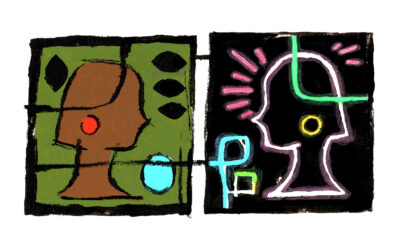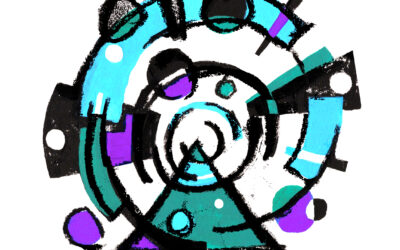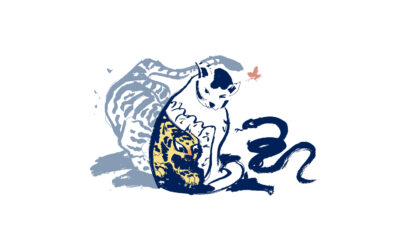The role retail space plays in the overall brand experience is changing. It has evolved from a venue for transactions to a place where it enables consumers to bond with the brand and eventually understand the broader brand identity.

(Credit: Saturnbird)
More recently, religious cues, such as crosses and altars, have been used—intentionally or unintentionally—in independent architecture to enchant curious consumers to embark on a pilgrimage to worship the brand without them even noticing.
Most religious cues are subtly hidden underneath modern design elements, aiming to influence the consumer’s subconscious. Everyday activities and purchases are ritualized, and a sense of godliness and superiority is instilled in the transaction. This happens mainly across three elements: architectural construct, interior atmosphere, and specific designs and objects.

(Credit: Apple Stockholm, Oikumene Church)
First View: Construct. Higher Purpose Suggested in the Architecture.
Before entering the retail space, the first thing consumers notice is the outward appearance of the architecture. Many borrow the cues from religious buildings, connecting their brand to a higher purpose.
Apple’s Stockholm flagship stands on its own, deliberately disconnected from other buildings. It also has a large flat surrounding, just like many other sacred religious venues such as Oikumene Church, to stand out more clearly. This choice of location creates a sense of grandeur and a holy aura that suggests sacredness and nobility.
The hanging Apple logo on the top of the front gate resembles the crucifix in a church. While the crucifix signals Jesus’ sacrifice and suggests the redemption of humankind, the bitten Apple tells a beautiful story of curiosity and creativity. Despite being different in meaning, both symbols try to stimulate their believers’ faith and act as a siren call to new disciples to come and explore.
Apple also leverages cues beyond replicating what already exists. The transparent façade gives its brand vision a final push as it demonstrates a clean, accessible, and democratized brand image that welcomes everyone.

(Credit: Gentle Monster, DJI, Lululemon)
Second View: Atmosphere. Reverence for Almightiness
When stepping inside the store, many brands will borrow from the enormous volume of iconic religious symbols to form the same feeling of awe and mightiness.
The most common approach is to erect installations of a leviathan scale solemnly in the centre of the retail space. For example, in Gentle Monster’s Haus Shanghai stands a huge human-faced mechanic with a pair of piercing eyes gazing at visitors. Similarly, in DJI’s Shenzhen flagship, we also find a gigantic installation for trying out their drones. The imposing size of both structures towers over consumers, presenting an unquestionable attitude and flexing their all-mightiness to consumers, like Christ the Redeemer and the Great Sphinx. Somehow consumers are subconsciously prodded to worship the brands’ mastery of technology.
Lululemon’s mannequins borrow from the arrangement of jamb figures on cathedrals. Placed in a line above eye level, consumers are forced to gaze upward and, at the same time, allegorically submit themselves to the brand.

(Credit: Gentle Monster)
Third View: Object. The Mystery of Modern Myth and Allegory
Settling into the space, consumers can look closely at the objects in the area that further contribute to the feeling of worship. Decorative details with prophetic value in churches and temples, such as frescos, are brought to life in a modern way, mixing technology and religious references through artistic means.
Once again, let’s look at Gentle Monster’s Haus Shanghai. Led by its signature six-legged walking robot, this flagship store introduces a series of provocative contemporary tales with mechanical support and artistic expression.
Visitors are guided to decipher the meaning encoded in the installations as a part of the visiting experience. Brand believers will take it further by comparing the designs against the brand philosophy to unearth hidden, symbolic values. Many will share their interpretations in online communities as if they are some “biblical hermeneutists”. Many opinions toward these modern myths can be found on Red and Weibo. It is not difficult to feel consumers’ enthusiasm for such contemporary mythical stories.

(Credit: Starbucks)
Starbucks’ ceiling mural imitates the ceiling painting in chapels, portraying the brand’s understanding of “To Inspire and Nurture the Human Spirit” in an alluring way.
Conclusion
Faith is a force so powerful brands should not ignore it. Instead, brands can employ religious cues to dramatize consumers’ inclination to mightiness and a higher power, connecting consumers by promising them that they are a part of something bigger, something noble and something eternal.
In the long run, a sense of communal bond amongst consumers may emerge, helping the brand reinforce its appeal through word-of-mouth and interpersonal relationship and becoming a boon for brand trust.
In Gentle Monster’s approach, the intense chemistry between religion and technology does not go unnoticed. So rather than directly providing a solution, tech brands can consider veiling their vision and mission behind a series of reinvented stories that combine religious cues and technological marvels.
Through this, a halo of mysteriousness is formed. Brands will be better at building and refining their images based on consumers’ viewpoints, creating powerful modern myths as time passes. Eventually, a long-lasting commitment by both parties takes shape – brands become grander, and consumers can feel part of something greater.



